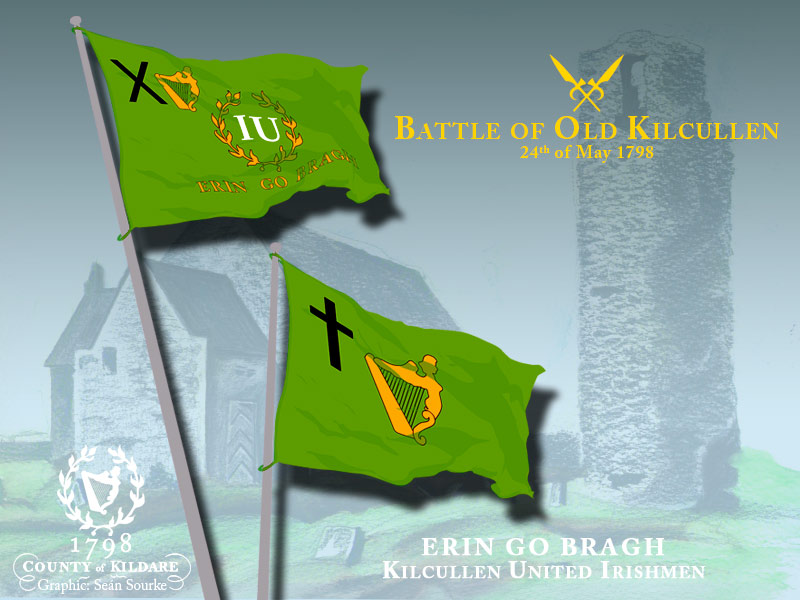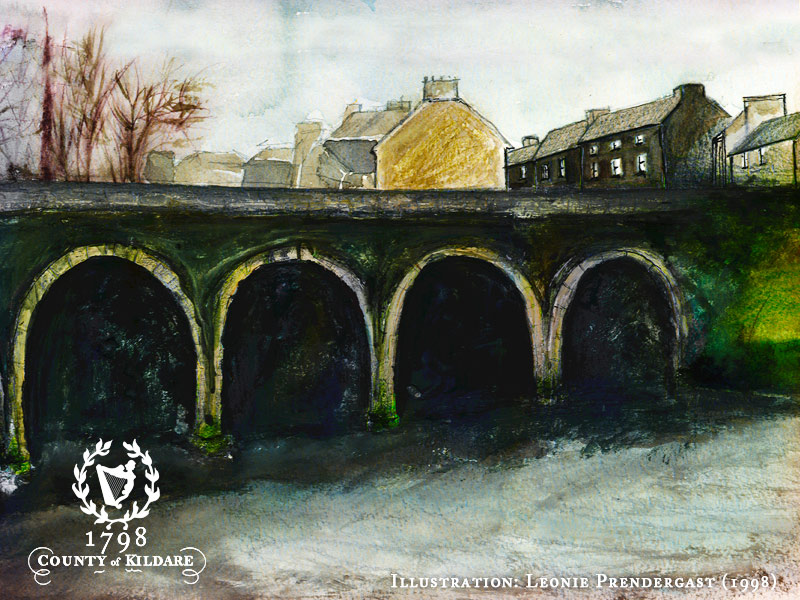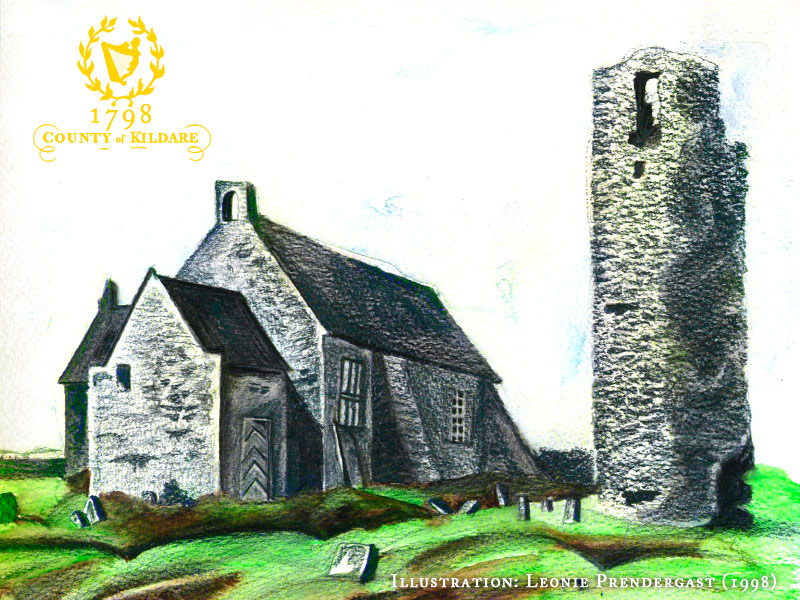Rebellion Towns & Villages

Old Kilcullen
Around 300 rebels entrenched themselves in the old churchyard on top of the hill near Old Kilcullen. General Dundas was stationed nearby at Castlemartin with about 60 troops at his disposal – 20 infantry of the 9th Dragoons, under the infamous Captain Erskine, and the Romney Fencibles under Captain Cooke. At around 7 a.m., without waiting for the support of the infantry, the cavalry attacked the hill. They charged the rebel positions three times, but were routed by the determined pikemen who held all the advantage of the ground. Erskine, Cooke and about 21 of their men were killed, with 10 more seriously wounded. Dundas retreated with his forced to Kilcullen Bridge, where he was joined by Captain Robert La Touche and 100 local yeoman. The rebels followed Dundas’s movements, posting themselves on high ground at Turnpike Hill, astride the Kilcullen/Naas road. On the left of the road rose the hill at their backs, on the right they dug in behind the high banks of the fields. This effectively cut off Dundas’ retreat to Naas.

Now they numbered almost 1,000 men, as opposed to around 130 soldiers under the command of General Dundas. The General sent two parties forward, with orders not to engage the enemy, but to draw the rebels down the hill into the sights of his riflemen. This strategic feint gave the victory to Dundas as the concentrated fire decimated the rebels who descended the hill. They were routed by the cavalry as the forded the Liffey at Athgarvan.
Dundas reported:
“The slaughter was considerable for such an action – about 150 lay dead. No prisoners.”
The troops suffered no losses. Dundas retreated to Naas and ordered all other local commanders to do likewise, in an effort to consolidate their position. The subsequent withdrawal of the garrisons was to leave much of the county in rebel hands.

Rebellion Towns & Villages
Naas | Ballymore | Old Kilcullen | Knockaulin | Narraghmore | Ballitore | Athy | Monasterevin | Kildare Town | Rathangan | Gibbet Rath | Clane | Prosperous | Timahoe | Ovidstown | Surrender
